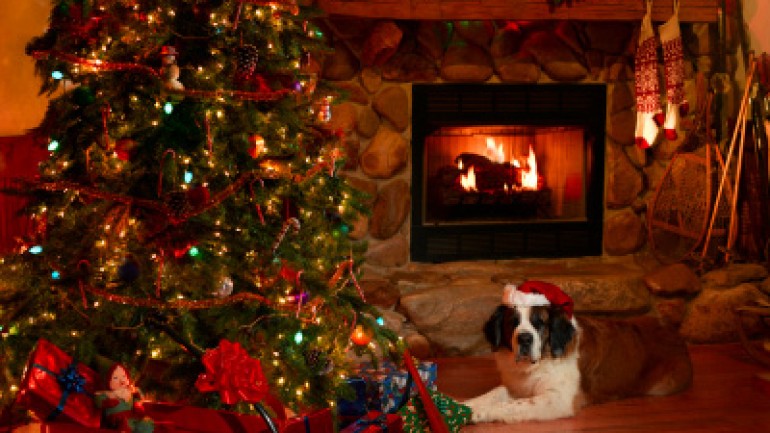Centuries and centuries before Christ was born, Romans, Mesopotamians, Carthaginians, Balkans, Germans and Scandinavians held huge celebrations on or near December 25th to welcome the return of the sun.
The Origins of Christmas delves into this history, revealing surprising similarities between the world’s favourite Christian holiday and some of its not-so-religious roots:
- One of the earliest Santa Claus prototypes was a convict who, during a respite from everyday social restrictions, was chosen to replace the king for the new year festivities and who oft-time was sacrificed as the celebrations drew to a close.
- Giving dolls to children at Christmas is likely a reversal of an ancient tradition of giving children (i.e. sacrificing them) to the gods of agriculture.
- The light-hearted custom of kissing under the mistletoe has a serious history. The Celtic Druids called the herb “the all healer” and believed it not only increased fertility of soil and cattle, but that it also cured impotence.
The video traces the decision of the early Catholic Church to adopt the centuries-strong pagan celebrations and baptize them with Christian meaning. It follows Christmas to its modern incarnation, no longer a celebration of the return of the sun, now a commerce-driven vehicle boosting sales of everything under the sun.
Alternatives to today’s Christmas of consumerism are explored with the introduction of the Public Dreams Society, a Vancouver group determined to return the Yuletide to its lusty pagan beginnings.




Wow…I have always found it fascinating how folks will bend the truth to make it fit and forward their own agendas. The agenda here is obviously Christian one, complete with half-assed research and misinformation about how and why some of pagan rituals discussed were conducted. These “facts” have not only been bent, they have been folded, spindled and mutilated.
I completely support educating everyone, Christian and otherwise, of the factual origins of the holidays they celebrate through tradition. I don’t agree with the hosts in that the pagan aspects of these holidays or anything else is inherently bad, as I find it all quite interesting and inoffensive as an open-minded, logical individual. Love that the documentary minimises all anti-pagan attitude until right at the end, and even then it’s from more of a pro-Christian than a pagan bashing standpoint. Respect for the creators (despite this being REALLY old it seems).
really informative and interesting.
whoever did the research for this documentary is highly confused about the origins of the belief in faeries
faeries and elves are real
if you eat enough mushrooms which will open your third eye you will see the faeries and elves
I saw the mushrooms faeries hopping through their forest
they were only about a foot tall and were covered in light grey fuzz
they had paws and reminded me slightly of bear cubs
they also had what appeared to be large mushroom cap hats
the faeries are waiting for us to see them again
If you eat enough mushrooms you will see a lot of strange stuff thats not real. There is a common sight in hallucinogenics that has been depicted even in stone age cave art. The image is of a spirit guide, a mother, an oracle etc.This guide usually speaks or shows your subconcious thought. The third eye if you will call it that. Everyone with a normal functioning Brain has this “Third eye” It is your intrinsic nature and most people are good natured, even if they outwardly act bad. People with alternatively functioning brains can get really messed up on shrooms though.
This documentary has an amazing amount of history that has been researched on this subject, enjoy! Todd